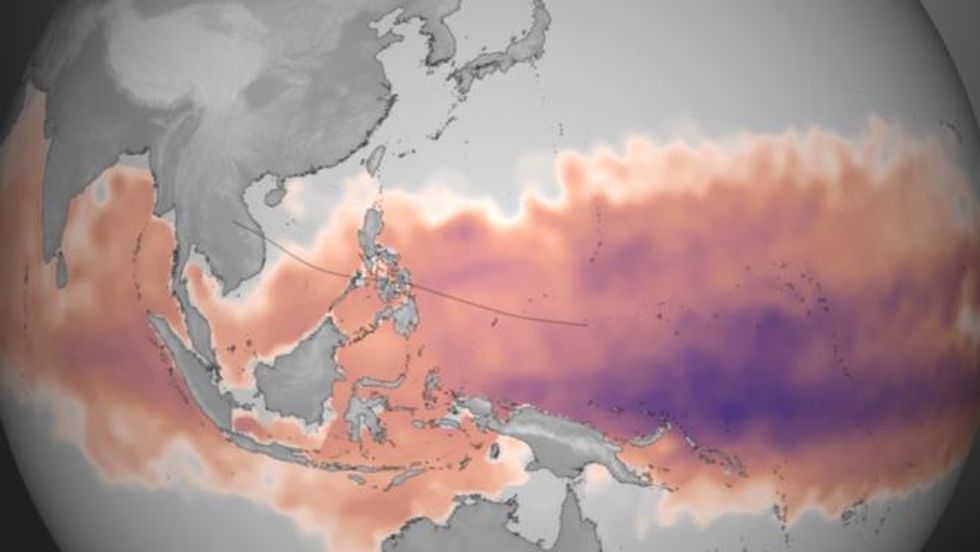Nov 08, 2013
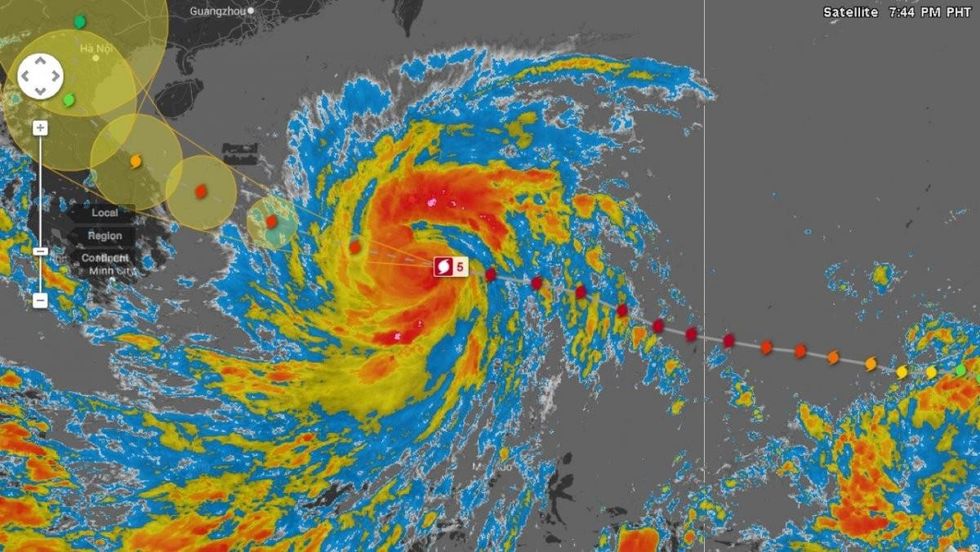
Super Typhoon Haiyan slammed the central islands of the Phillipines overnight and with sustained winds of nearly 200 mph the ferocious storm fulfilled fears that it would go down as the world's most powerful tropical storm to make landfall in all recorded history.
According to meteorologist Jeff Masters, citing wind speed estimates from the Joint Typhoon Warning Center (JTWC, "Haiyan had winds of 190-195 mph at landfall, making it the strongest tropical cyclone on record to make landfall in world history. The previous record was held by the Atlantic's Hurricane Camille of 1969, which made landfall in Mississippi with 190 mph winds."
Three people have been reported killed by the storm as of Friday morning, but that number is expected to rise. Tens of thousands were evacuated and the World Food Programme has warned that as many as 2.5 million people will need emergency assistance in the storm's wake.
Giant waves, over fifteen feet in some places, were reporting as Haiyan came ashore but it was the wind strength that was cited as the most destructive aspect of the storm. As communication systems are down in the hardest hit areas, damage reports from those places were so far hard to come by.
As the Guardianreports:
The storm - which is dubbed Yolanda in the Philippines - ripped iron roofs off buildings and threw trees across roads, cutting out power to entire provinces, particularly around the storm's centre in Eastern Samar province.
"We've been hearing from my colleagues in [the city of] Tacloban that they've seen galvanised iron sheets flying just like kites," Mai Zamora, of the charity World Vision, told the BBC. "It's actually all around the roads now. The roads are flooded in Tacloban."
Having now passed over the Phillipines, the storm is regaining some lost strength as it crosses the South China Sea and heads for Vietnam, Laos, and mainland China.
Twitter continues to track updates from users around the globe:
And Simon Redfern, a professor of Earth sciences at Cambridge, puts the megastorm in the context of climate change and the broader trend of extreme weather patterns that have been tied to global warming. Writing for the online journal The Conversation, he explains:
The surface water, as well as deeper water, temperatures of the Western Pacific have provided huge amounts of energy for the storm to absorb, fuelling Haiyan's intensification.
Super Typhoon Haiyan in pictures:
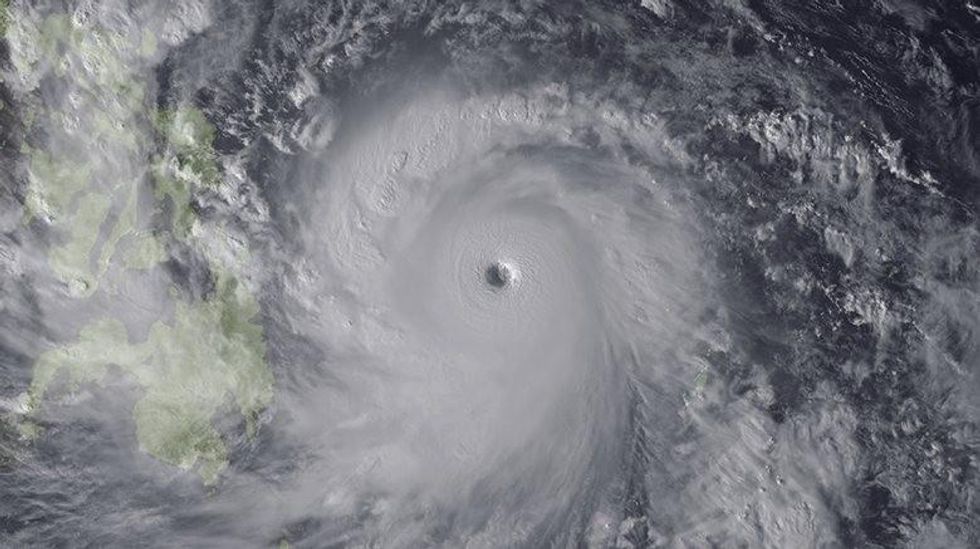
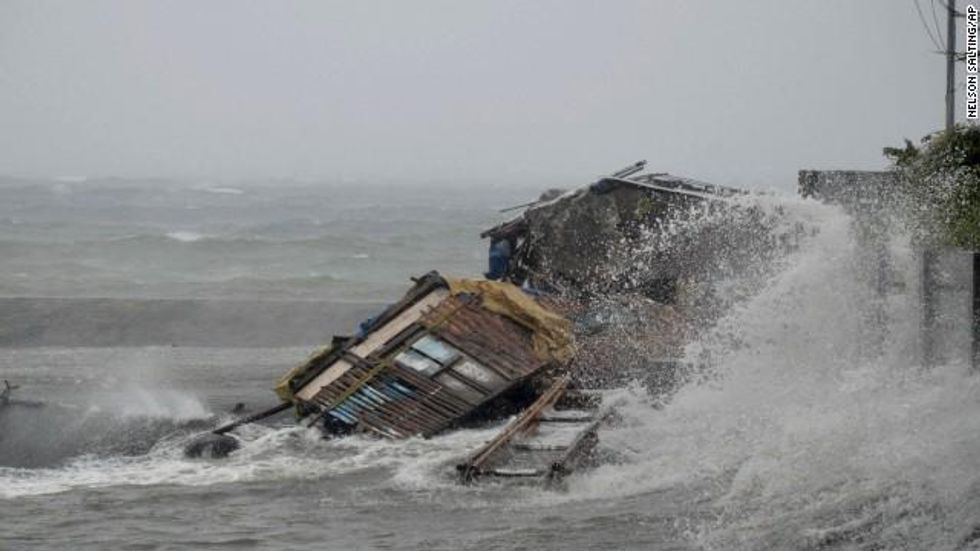
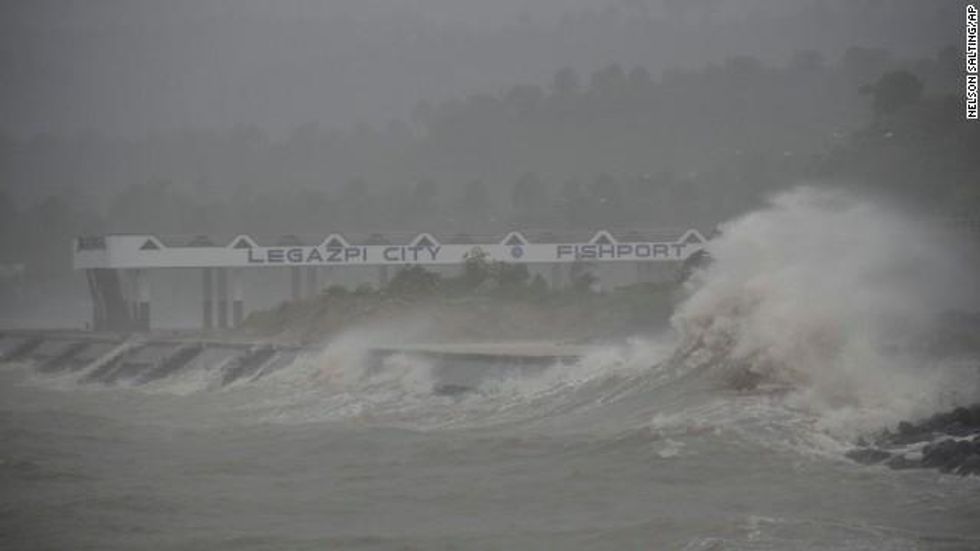
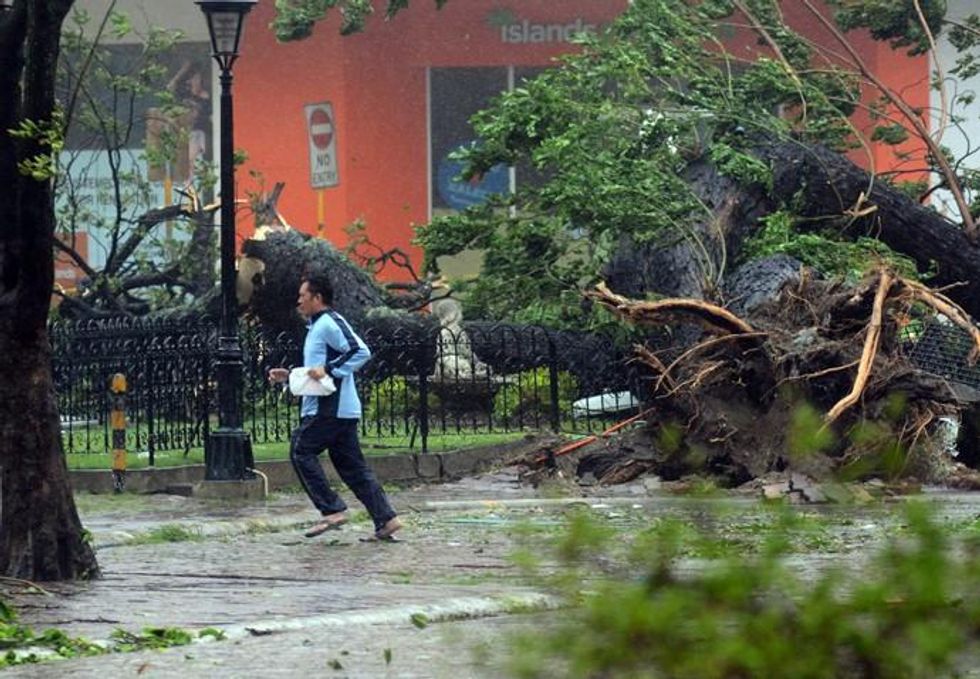
\u201cFor an idea of the strength of Typhoon #Haiyan have a look at this image via @RedCrossCebu\u201d— British Red Cross \ud83e\udde1 (@British Red Cross \ud83e\udde1) 1383915867
______________________________
Join Us: News for people demanding a better world
Common Dreams is powered by optimists who believe in the power of informed and engaged citizens to ignite and enact change to make the world a better place. We're hundreds of thousands strong, but every single supporter makes the difference. Your contribution supports this bold media model—free, independent, and dedicated to reporting the facts every day. Stand with us in the fight for economic equality, social justice, human rights, and a more sustainable future. As a people-powered nonprofit news outlet, we cover the issues the corporate media never will. Join with us today! |
Our work is licensed under Creative Commons (CC BY-NC-ND 3.0). Feel free to republish and share widely.

Super Typhoon Haiyan slammed the central islands of the Phillipines overnight and with sustained winds of nearly 200 mph the ferocious storm fulfilled fears that it would go down as the world's most powerful tropical storm to make landfall in all recorded history.
According to meteorologist Jeff Masters, citing wind speed estimates from the Joint Typhoon Warning Center (JTWC, "Haiyan had winds of 190-195 mph at landfall, making it the strongest tropical cyclone on record to make landfall in world history. The previous record was held by the Atlantic's Hurricane Camille of 1969, which made landfall in Mississippi with 190 mph winds."
Three people have been reported killed by the storm as of Friday morning, but that number is expected to rise. Tens of thousands were evacuated and the World Food Programme has warned that as many as 2.5 million people will need emergency assistance in the storm's wake.
Giant waves, over fifteen feet in some places, were reporting as Haiyan came ashore but it was the wind strength that was cited as the most destructive aspect of the storm. As communication systems are down in the hardest hit areas, damage reports from those places were so far hard to come by.
As the Guardianreports:
The storm - which is dubbed Yolanda in the Philippines - ripped iron roofs off buildings and threw trees across roads, cutting out power to entire provinces, particularly around the storm's centre in Eastern Samar province.
"We've been hearing from my colleagues in [the city of] Tacloban that they've seen galvanised iron sheets flying just like kites," Mai Zamora, of the charity World Vision, told the BBC. "It's actually all around the roads now. The roads are flooded in Tacloban."
Having now passed over the Phillipines, the storm is regaining some lost strength as it crosses the South China Sea and heads for Vietnam, Laos, and mainland China.
Twitter continues to track updates from users around the globe:
And Simon Redfern, a professor of Earth sciences at Cambridge, puts the megastorm in the context of climate change and the broader trend of extreme weather patterns that have been tied to global warming. Writing for the online journal The Conversation, he explains:
The surface water, as well as deeper water, temperatures of the Western Pacific have provided huge amounts of energy for the storm to absorb, fuelling Haiyan's intensification.
Super Typhoon Haiyan in pictures:




\u201cFor an idea of the strength of Typhoon #Haiyan have a look at this image via @RedCrossCebu\u201d— British Red Cross \ud83e\udde1 (@British Red Cross \ud83e\udde1) 1383915867
______________________________

Super Typhoon Haiyan slammed the central islands of the Phillipines overnight and with sustained winds of nearly 200 mph the ferocious storm fulfilled fears that it would go down as the world's most powerful tropical storm to make landfall in all recorded history.
According to meteorologist Jeff Masters, citing wind speed estimates from the Joint Typhoon Warning Center (JTWC, "Haiyan had winds of 190-195 mph at landfall, making it the strongest tropical cyclone on record to make landfall in world history. The previous record was held by the Atlantic's Hurricane Camille of 1969, which made landfall in Mississippi with 190 mph winds."
Three people have been reported killed by the storm as of Friday morning, but that number is expected to rise. Tens of thousands were evacuated and the World Food Programme has warned that as many as 2.5 million people will need emergency assistance in the storm's wake.
Giant waves, over fifteen feet in some places, were reporting as Haiyan came ashore but it was the wind strength that was cited as the most destructive aspect of the storm. As communication systems are down in the hardest hit areas, damage reports from those places were so far hard to come by.
As the Guardianreports:
The storm - which is dubbed Yolanda in the Philippines - ripped iron roofs off buildings and threw trees across roads, cutting out power to entire provinces, particularly around the storm's centre in Eastern Samar province.
"We've been hearing from my colleagues in [the city of] Tacloban that they've seen galvanised iron sheets flying just like kites," Mai Zamora, of the charity World Vision, told the BBC. "It's actually all around the roads now. The roads are flooded in Tacloban."
Having now passed over the Phillipines, the storm is regaining some lost strength as it crosses the South China Sea and heads for Vietnam, Laos, and mainland China.
Twitter continues to track updates from users around the globe:
And Simon Redfern, a professor of Earth sciences at Cambridge, puts the megastorm in the context of climate change and the broader trend of extreme weather patterns that have been tied to global warming. Writing for the online journal The Conversation, he explains:
The surface water, as well as deeper water, temperatures of the Western Pacific have provided huge amounts of energy for the storm to absorb, fuelling Haiyan's intensification.
Super Typhoon Haiyan in pictures:




\u201cFor an idea of the strength of Typhoon #Haiyan have a look at this image via @RedCrossCebu\u201d— British Red Cross \ud83e\udde1 (@British Red Cross \ud83e\udde1) 1383915867
______________________________
We've had enough. The 1% own and operate the corporate media. They are doing everything they can to defend the status quo, squash dissent and protect the wealthy and the powerful. The Common Dreams media model is different. We cover the news that matters to the 99%. Our mission? To inform. To inspire. To ignite change for the common good. How? Nonprofit. Independent. Reader-supported. Free to read. Free to republish. Free to share. With no advertising. No paywalls. No selling of your data. Thousands of small donations fund our newsroom and allow us to continue publishing. Can you chip in? We can't do it without you. Thank you.
